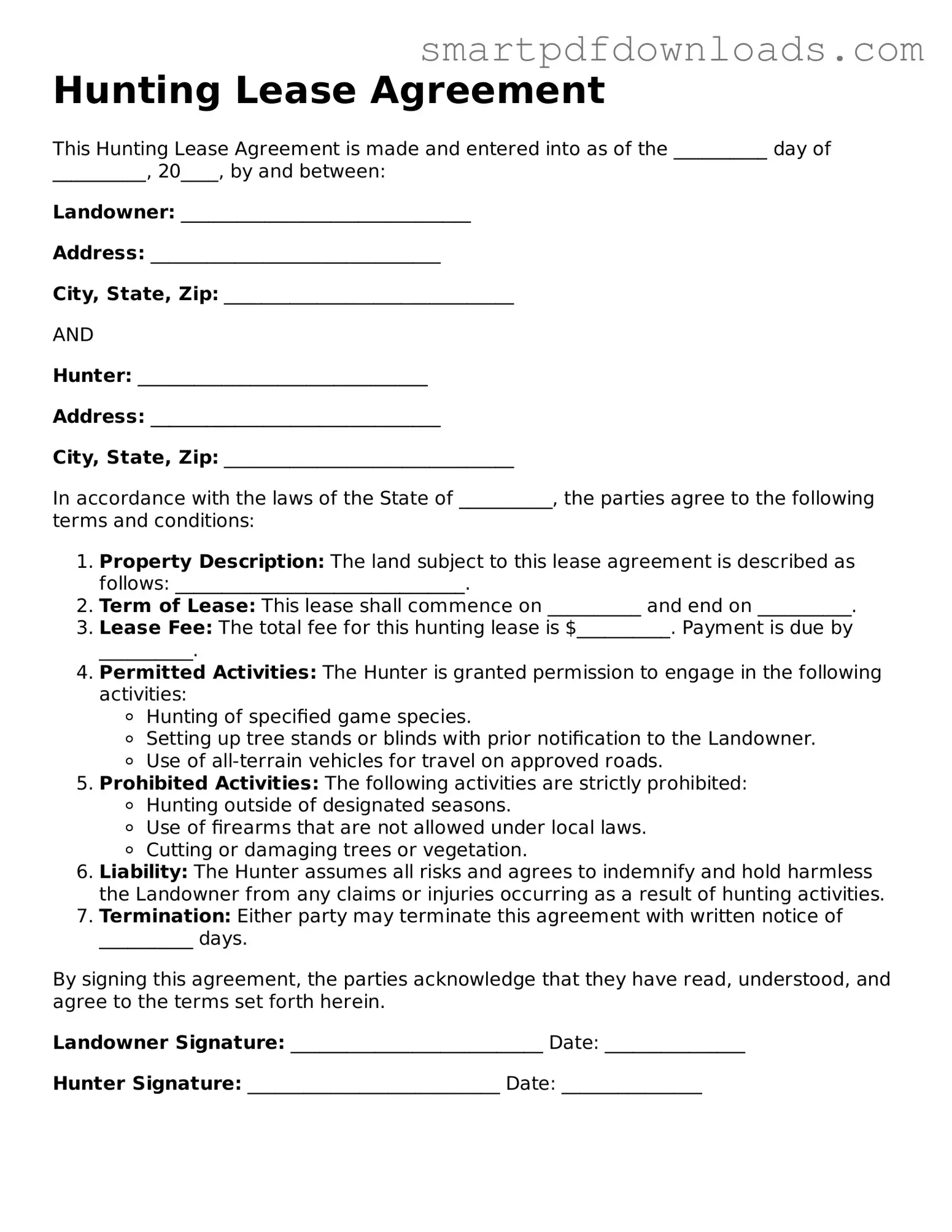Hunting Lease Agreement
This Hunting Lease Agreement is made and entered into as of the __________ day of __________, 20____, by and between:
Landowner: _______________________________
Address: _______________________________
City, State, Zip: _______________________________
AND
Hunter: _______________________________
Address: _______________________________
City, State, Zip: _______________________________
In accordance with the laws of the State of __________, the parties agree to the following terms and conditions:
- Property Description: The land subject to this lease agreement is described as follows: _______________________________.
- Term of Lease: This lease shall commence on __________ and end on __________.
- Lease Fee: The total fee for this hunting lease is $__________. Payment is due by __________.
- Permitted Activities: The Hunter is granted permission to engage in the following activities:
- Hunting of specified game species.
- Setting up tree stands or blinds with prior notification to the Landowner.
- Use of all-terrain vehicles for travel on approved roads.
- Prohibited Activities: The following activities are strictly prohibited:
- Hunting outside of designated seasons.
- Use of firearms that are not allowed under local laws.
- Cutting or damaging trees or vegetation.
- Liability: The Hunter assumes all risks and agrees to indemnify and hold harmless the Landowner from any claims or injuries occurring as a result of hunting activities.
- Termination: Either party may terminate this agreement with written notice of __________ days.
By signing this agreement, the parties acknowledge that they have read, understood, and agree to the terms set forth herein.
Landowner Signature: ___________________________ Date: _______________
Hunter Signature: ___________________________ Date: _______________
